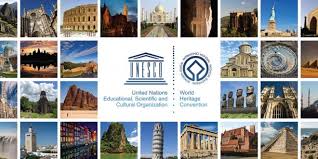UNESCO adds Jamaican reggae, Georgian wrestling and Japanese rituals in coveted list of intangible heritage
UN cultural agency UNESCO has added six new elements viz. Jamaican reggae, Georgian wrestling and Japanese ritual into its coveted list of “intangible heritage”. They were added at UNESCO’s Intergovernmental Committee for the Safeguarding of the Intangible Cultural Heritage meeting held in Mauritius
Six new elements added in list are
Chidaoba: It is Georgia’s traditional wrestling. It combines elements of wrestling, music, dance and special garments. It is part of Georgian folk dance and its practice encourages healthy lifestyle and plays an important role in intercultural dialogue”.
Hurling: It is field game from Ireland. It dates back 2,000 years, features strongly in Irish mythology. It is played by two teams using wooden “hurley” stick and small “sliotar” ball. It is considered as intrinsic part of Irish culture and plays central role in promoting health and wellbeing, inclusiveness and team spirit.
Reggae: It is Jamaican music originating from marginalized groups, mainly in Western Kingston. It was started out as voice of marginalized. But now it is played and embraced by wide cross-section of society, including various genders, ethnic and religious groups.
Raiho-shin: They are Japanese rituals used to admonish laziness and teach children good behavior. In it local people dress in outlandish costumes and visit houses as deities as part folk beliefs that deities visit communities and usher in new year or season. By performing rituals, local people notably children have their identities moulded, developsense of affiliation to their community and strengthen ties among themselves.
As-Samer: It consists mainly of dancing and singing and practiced across many areas of Jordan. It is performed on various occasions, most commonly during weddings. Its poetry forms are integral part of the tradition, expressing feelings of joy, peace, intimacy and empathy among those in attendance.
Spring festive rites of Kazakhstan’s horse breeders: It marks end of the old and beginning of a new annual horse-breeding cycle. It is rooted in traditional knowledge of nature and an age-old relation between man and horse. The rites involve skills inherited from nomadic ancestors, adapted to meet present-day conditions to ensure its continued viability.
UNESCO’s List of Intangible Cultural Heritage
This coveted list is made up of those intangible heritage elements that help demonstrate diversity of cultural heritage and raise awareness about its importance. The list was established in 2008 when Convention for Safeguarding of the Intangible Cultural Heritage came into effect. It includes important intangible cultural heritages worldwide. It has two parts viz. Representative List of Intangible Cultural Heritage of Humanity and List of Intangible Cultural Heritage in Need of urgent Safeguarding. From India, 14 Intangible Cultural Heritages have been added into this list. They are Koodiyattam (Sanskrit Theatre of Kerala), Mudiyett (theatre ritual of Kerala), Tradition of Vedic Chanting, Kalbelia (folk songs and dances of Rajasthan), Ramlila (Traditional Performance of the Ramayana), Sankirtana (singing, drumming and dancing ritual of Manipur), Ramman (religious festival and ritual theatre of Garhwal Himalayas), Thatheras (Traditional brass and copper craft of utensil of Punjab), Chhau dance (classical Indian dance originated in the eastern Indian states), Buddhist chanting of Ladakh (recitation of sacred Buddhist texts in Ladakh region of Jammu and Kashmir), Yoga and KumbhMela.
Month: Current Affairs - November, 2018


